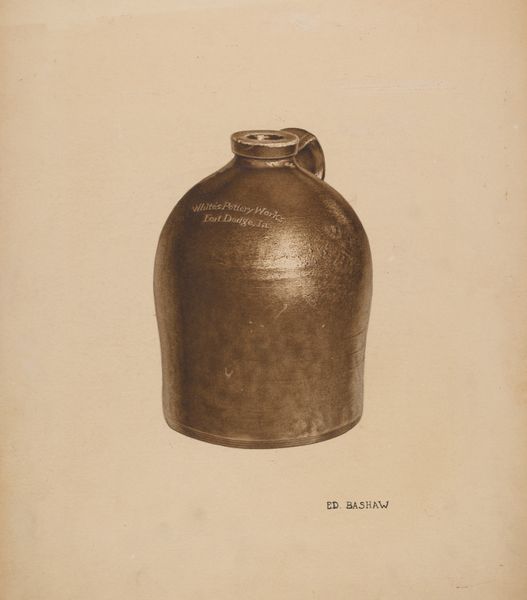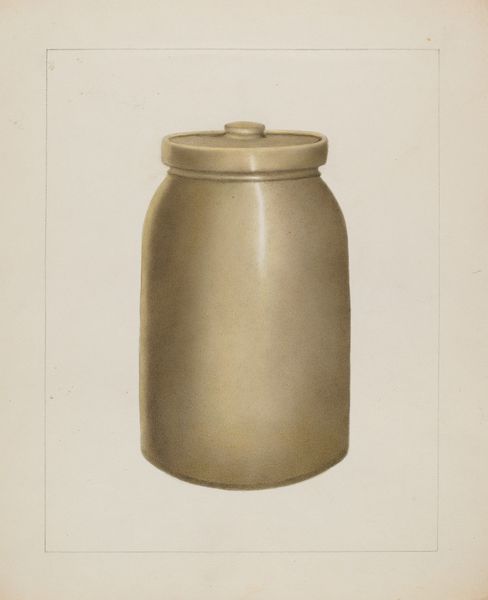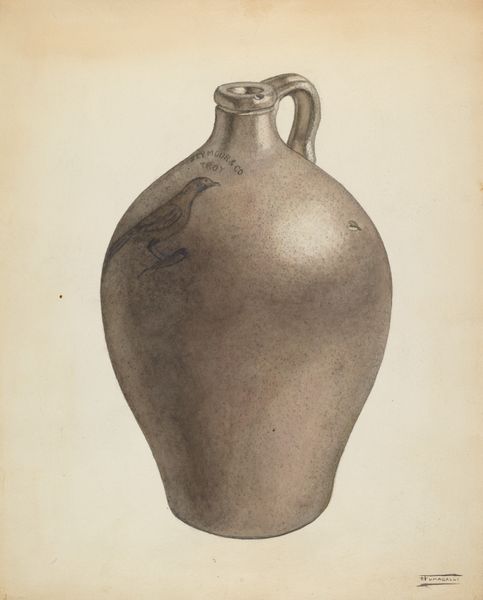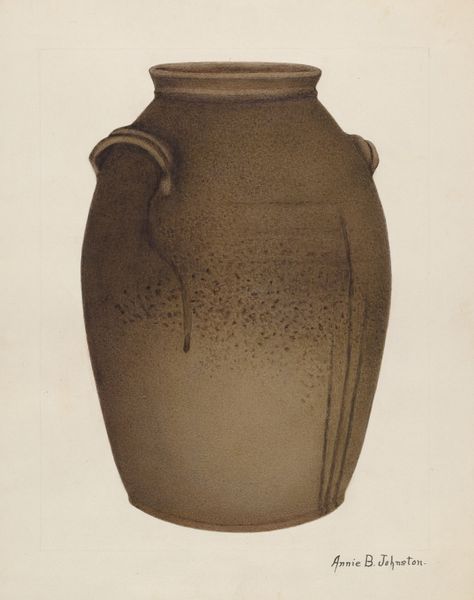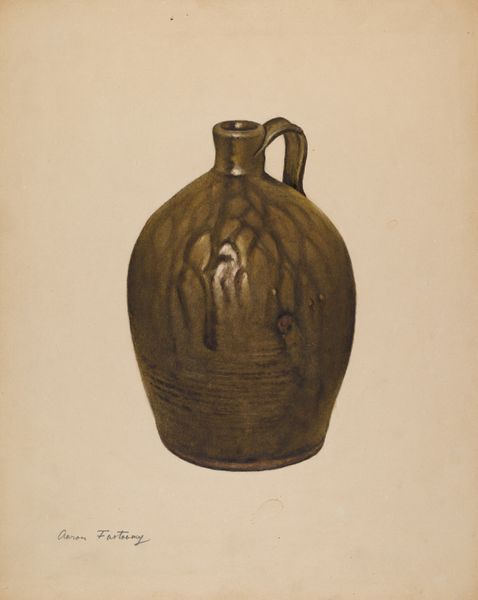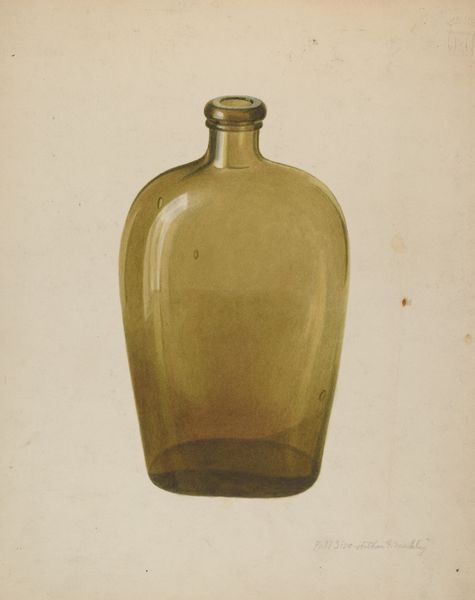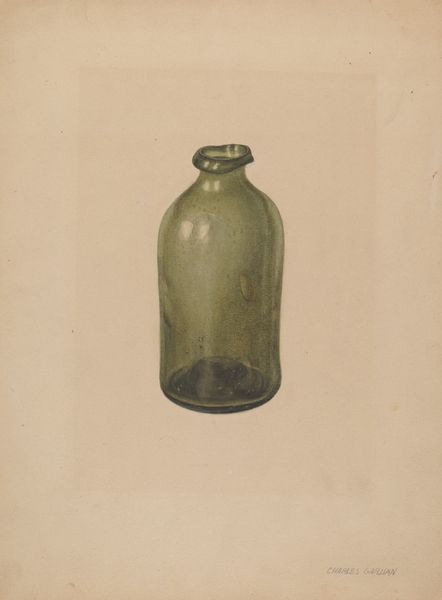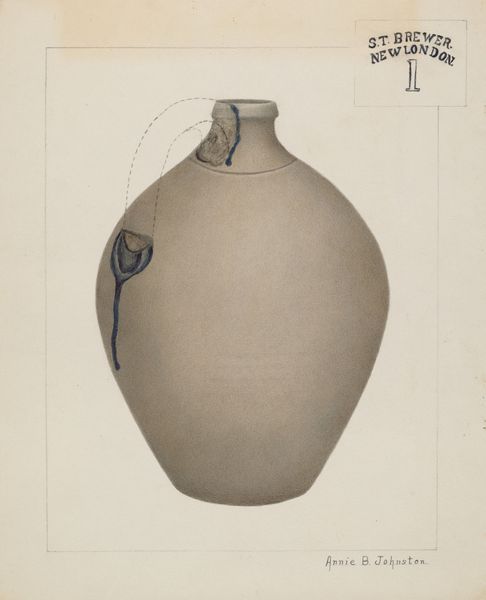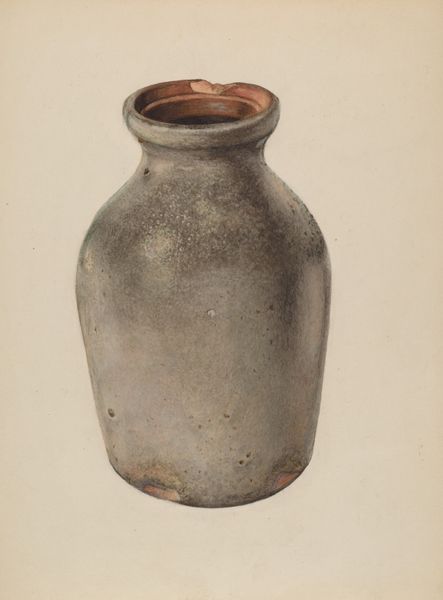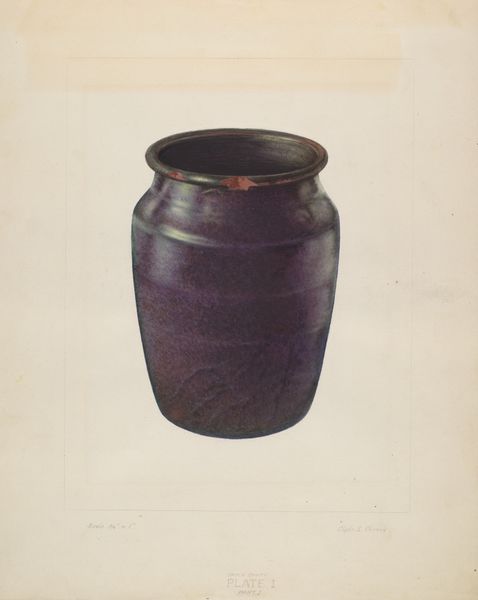
drawing, paper, pencil, graphite
#
drawing
#
paper
#
pencil drawing
#
pencil
#
graphite
Dimensions: overall: 40.7 x 33 cm (16 x 13 in.) Original IAD Object: 10" High 3 3/8" Dia(mouth) 6 3/8" Dia(base)
Copyright: National Gallery of Art: CC0 1.0
Curator: Let's discuss Violet Hartenstein's drawing, "Fruit Jar," circa 1940, created using pencil and graphite on paper. What are your initial impressions? Editor: My first impression is one of quiet melancholy. The subdued graphite tones and simple composition give it a sense of stillness, almost like a faded memory. Curator: Indeed. Thinking about the era in which it was created, this seemingly mundane object, a fruit jar, speaks volumes about domesticity, preservation, and perhaps even anxieties around sustenance during the interwar period and its aftermath. Hartenstein's focus shifts our perspective, spotlighting an object easily overlooked in other artwork or real-life depictions. Editor: From a formal perspective, note how Hartenstein uses subtle variations in shading to create volume and texture. The slight imperfection near the jar's opening adds a sense of realism. The play of light across the smooth surface is carefully observed. Curator: Absolutely, and beyond the technical skill, what intrigues me is the quiet statement it makes about the role of women during that era. Fruit preservation was a key part of women’s work. Therefore, we may even ask about what isn't preserved, such as female experiences not recorded at the time. This drawing then acts as both signifier and a marker of lost context, while quietly resisting social hierarchies within domestic life. Editor: I see your point about the broader context. Although one cannot discount her careful modulation of light and shadow as crucial for the artwork’s visual success, Hartenstein directs attention, and indeed elevates it, with the application of graphite onto the humble fruit jar. The graphite, after all, mimics an industrial-produced appearance. Curator: In a way, this subverts the art historical narrative which has long placed "still life" pieces from the "old masters" high in the canon. Here we have a subversion from below. This also reframes narratives around class and labour to invite a richer interpretation. Editor: Well, considering all that, the drawing really encapsulates a multitude of historical and cultural significance, far beyond its seemingly simple form. Curator: Yes, Hartenstein challenges us to look closer, urging an appreciation of mundane objects, as we reflect upon the world they are found within.
Comments
No comments
Be the first to comment and join the conversation on the ultimate creative platform.
